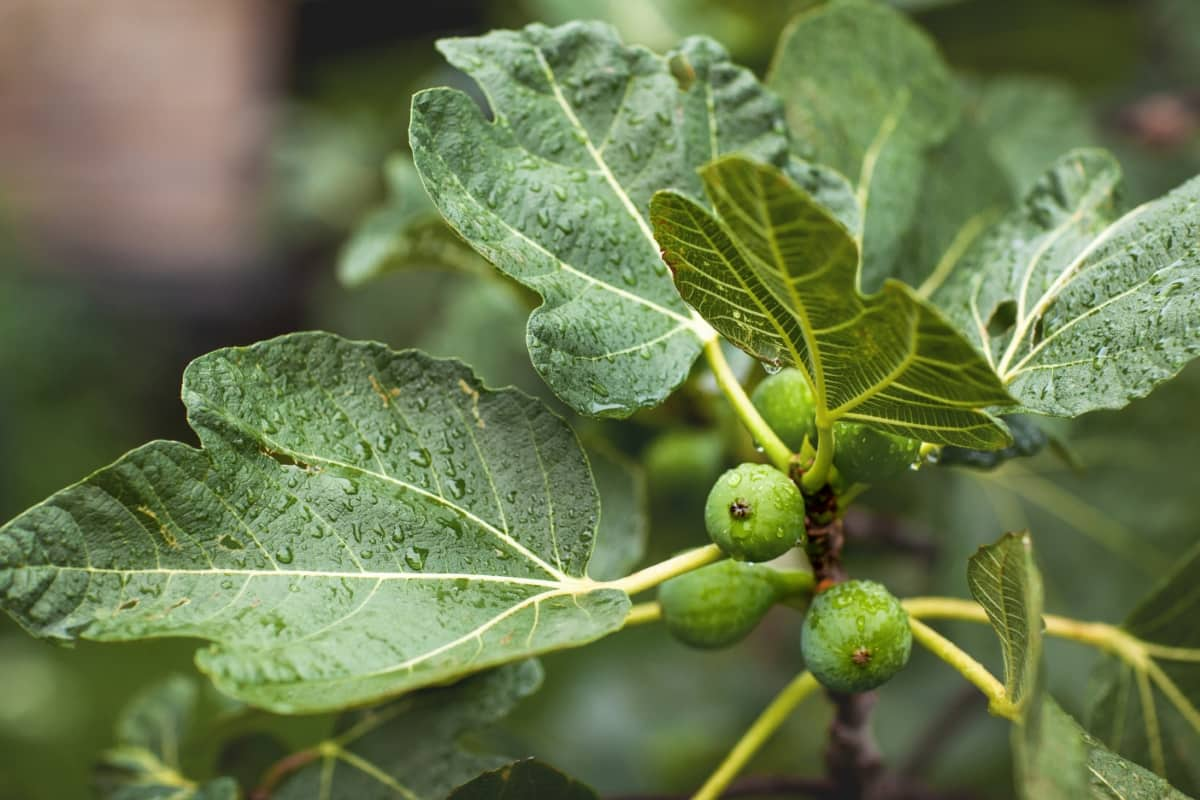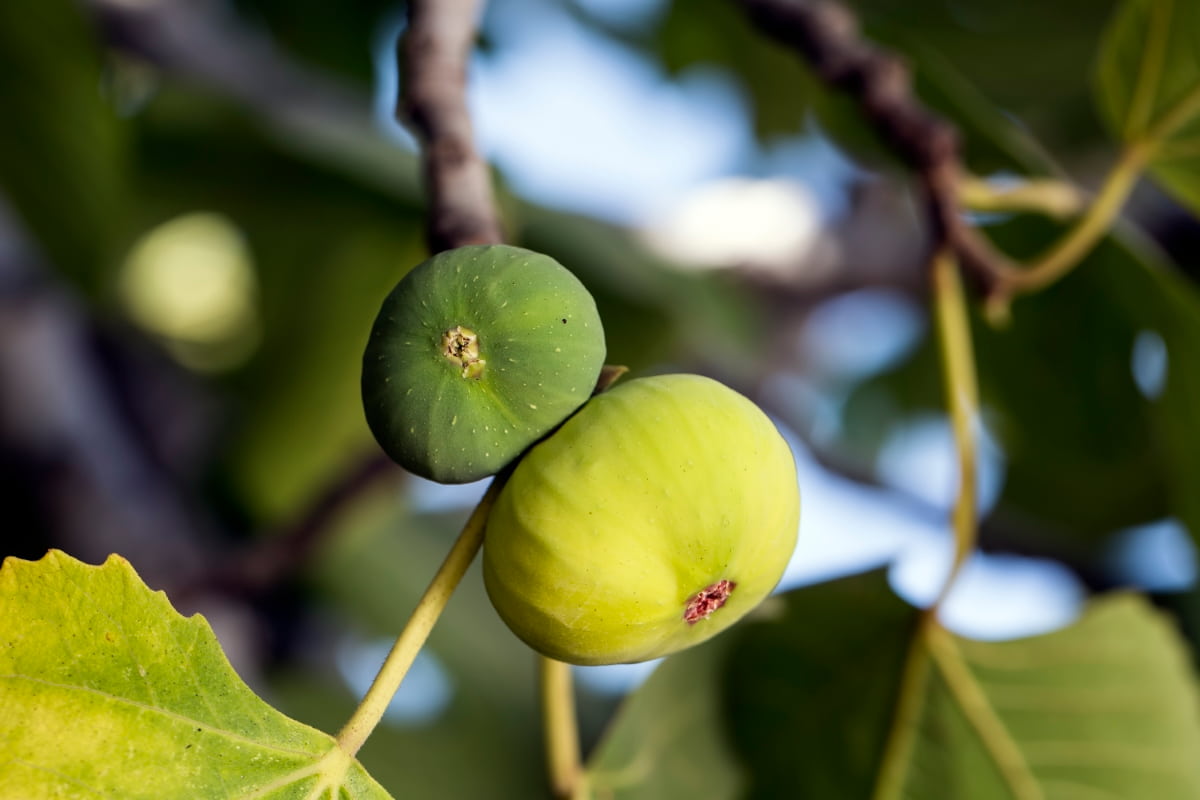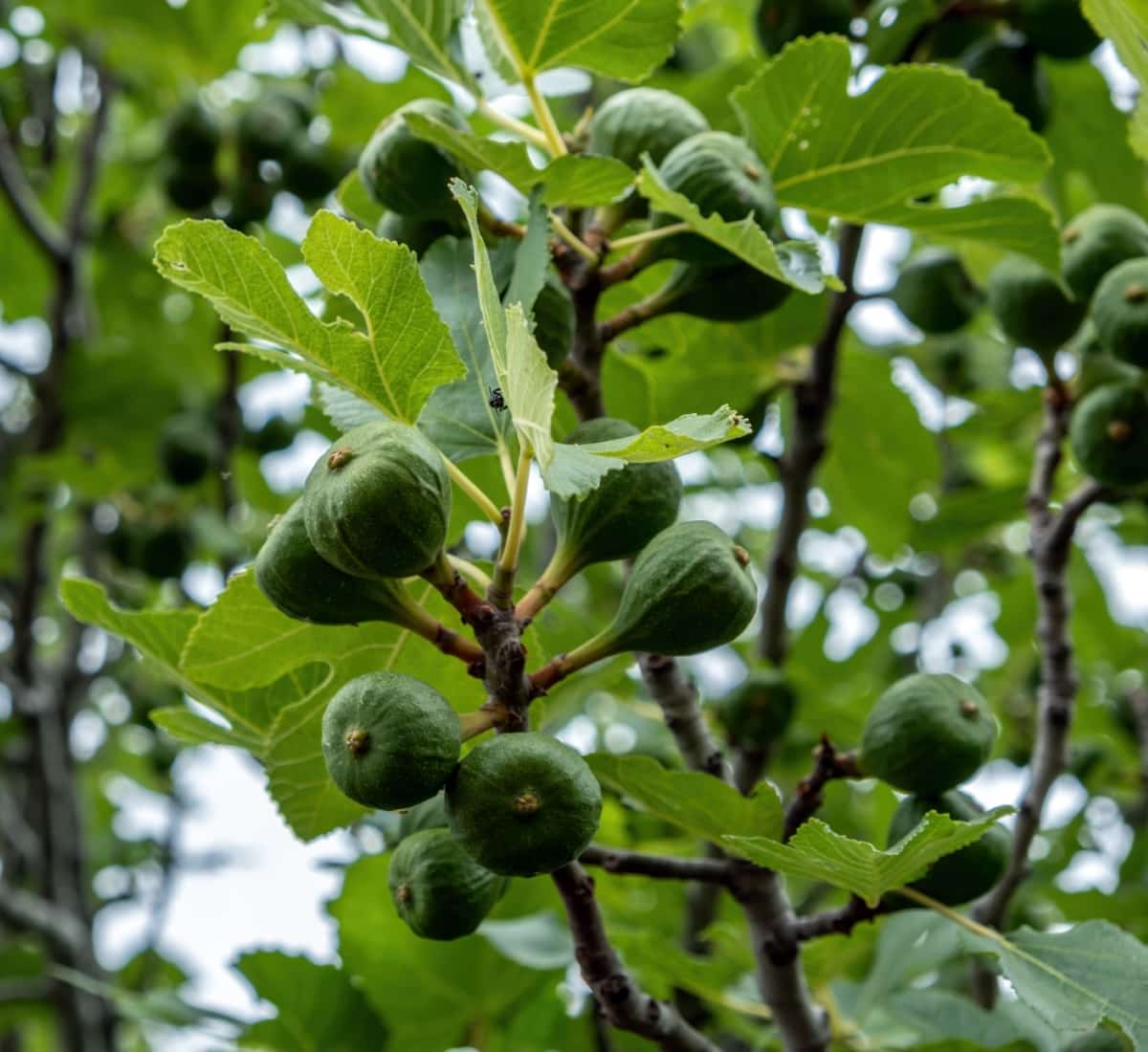The Fig is scientifically called Ficus carica, a small tree species in the flowering plant family Moraceae. To ensure the health and vitality of fig trees grown in containers, it’s crucial to understand their unique needs. By addressing common issues promptly, you can help your Fig tree flourish and produce an abundant harvest.

Identifying and Resolving Root Bound Issues in Potted Fig Trees
It could be a root bound issue causing distress to your beloved plants. Keep an eye out for roots circling the pot’s bottom or poking through drainage holes, indicating it’s time for some space. To resolve this, gently loosen the roots and consider repotting them into a larger container with fresh soil. Don’t forget to water thoroughly after transplanting to help ease the shock on your Fig tree. Remember, giving them room to spread their roots can lead to healthier growth and bountiful fruit production.
Preventing Overwatering and Managing Root Rot in Container-Grown Figs
Overwatering can be a common issue when it comes to caring for potted Fig trees. Too much water in the Fig can lead to root rot, a serious condition that affects the plant’s health. To prevent overwatering, make sure your pot has proper drainage holes at the bottom. Another way to avoid overwatering is by checking the moisture level of the soil before watering again. Root rot pest is caused by fungi that thrive in overly wet conditions. To manage root rot, ensure good air circulation around the roots by not overcrowding multiple plants in one container.
Recognizing and Addressing Underwatering and Drought Stress in Potted Figs
Underwatering and drought stress can be challenging for potted Fig trees. If you notice the leaves turning brown or curling at the edges, it might be a sign of dehydration. To address this issue, make sure to water your Fig tree regularly but avoid overwatering as well. Check the soil moisture; if it feels dry, then it’s time to water. To maintain optimal hydration levels for your potted Fig tree, consider using a layer of mulch around the plant base to conserve moisture and protect against rapid evaporation.
In case you missed it: Different Types of Fig Varieties: Distinct Types and Their Characteristics

Diagnosing and Correcting Nutrient Deficiencies in Potted Fig Trees
Growing Fig trees in pots can be a rewarding experience, but sometimes, these plants may show signs of nutrient deficiencies. Yellowing leaves or stunted growth could indicate that your Fig tree is lacking essential nutrients. To diagnose the issue, carefully observe the symptoms and compare them to common deficiency signs, such as yellowing between leaf veins for iron deficiency or purple-tinted leaves for phosphorus deficiency. Once you’ve identified the problem, it’s time to take action. Regularly monitor the soil pH levels and adjust if necessary to ensure optimal nutrient absorption by your Fig tree roots.
Controlling Pests and Insect Infestations on Container-Grown Fig Trees
The common challenge faced by Fig tree owners is dealing with pests and insect infestations. These visitors can wreak havoc on your potted Fig trees if left unchecked. Aphids are insects that love to feast on the sap of Fig trees, causing leaves to curl and distort. Scale insects may also make themselves at home on your Fig tree, appearing as small bumps along branches or undersides of leaves. Mealybugs are no strangers either, leaving a sticky residue known as honeydew in their wake. To combat these intruders, consider using neem oil or insecticidal soap.
Managing Fungal Diseases in Potted Fig Trees for Optimal Health
Keeping your potted Fig trees healthy involves staying vigilant against common fungal diseases that can wreak havoc on their well-being. Powdery mildew is a sneaky culprit that presents as a white powdery substance on leaves and stems, but you can combat it with proper air circulation and fungicidal sprays. Anthracnose is another pesky fungal disease to watch out for.
In case you missed it: 14 Common Fig/Anjeer Plant Problems: How to Fix Them, Solutions, and Treatment

It causes dark lesions on fruits and leaves. Prune infected areas promptly and dispose of them properly to prevent their spread. Leaf spot is yet another menace that manifests as brown spots surrounded by yellow halos; remove affected foliage and avoid overhead watering to mitigate its impact. Keep the area around your Fig tree clean, promote good airflow, and ensure proper drainage to ward off this fungus effectively.
Improving Poor Fruit Development in Potted Figs with Effective Techniques
Consider the container size – make sure it’s spacious enough for roots to thrive and support fruit production. Additionally, regular pruning can encourage new growth and increase fruit-bearing potential. Next, focus on proper watering practices – keep the soil consistently moist but not waterlogged. A balanced fertilizer can provide nutrients for robust Fig development. Moreover, ensuring adequate sunlight exposure is crucial for optimal fruit ripening. Furthermore, mulching around the tree base helps retain moisture and regulate soil temperature.
Understanding and Preventing Leaf Drop and Yellowing Leaves in Potted Figs
Yellowing leaves might signal nutrient deficiencies or overwatering. Figs are picky about their water intake; they like it just right. So, check the soil moisture before pouring more water into the pot. Leaf drops can happen due to stress from changes in temperature or light exposure. To prevent these issues, maintain a stable watering schedule and ensure your Fig gets enough sunlight without being scorched. Remember to feed it balanced fertilizer occasionally for those essential nutrients.
Protecting Potted Fig Trees from Sunburn and Leaf Scorch
Sunburn and leaf scorch are real threats to these delicate plants. To shield your Fig tree from harsh sunlight, consider relocating the pot to a spot with partial shade. A little shelter goes a long way in keeping those leaves happy and healthy. If moving isn’t an option, try using shading materials like cloth or umbrellas to create a protective barrier. It’s like giving your Fig tree its stylish parasol! Regular watering is key to preventing stress from heat exposure.
In case you missed it: Best Fertilizer for Fig trees/Anjeer: Organic, Homemade, Liquid, Natural, NPK, Compost, How and When to Apply

Ensuring Sufficient Pollination for Fruit Production in Potted Fig Trees
It is crucial for a bountiful harvest. While Fig trees are self-pollinating, they still benefit from pollinators like bees and wasps. To attract these helpful insects, consider planting flowers nearby to create a welcoming environment. Additionally, gently shaking the branches of your Fig tree can simulate the buzzing of bees and aid in pollen transfer.
If you’re growing your potted Fig indoors, using a brush to transfer pollen between flowers can mimic natural pollination processes. Maintaining good air circulation around your potted Fig tree can also help ensure that pollen reaches its intended destination within the flowers. By identifying common problems and implementing the solutions, you can ensure that your Fig trees grow healthy and produce delicious fruits.
- Best Liquid Fertilizer for Flowering Plants
- How to Set Up an Efficient Watering System for Home Garden
- How to Mulch Tulip Bulbs: Expert Tips Best Tulip Blooms
- Common Problems with Potted Figs and How to Solve Them
- How to Prevent Flower Drops in Pomegranate Trees: Effective Tips
- How to Boost Ridge Gourd Flowering and Yield: A Beginner’s Guide
- Effective Pollination Techniques for Maximizing Gourds Yield
- Composting Techniques for Manure in Home Gardens
- A Step-by-Step Guide on Propagation Techniques for Jasmine Plants